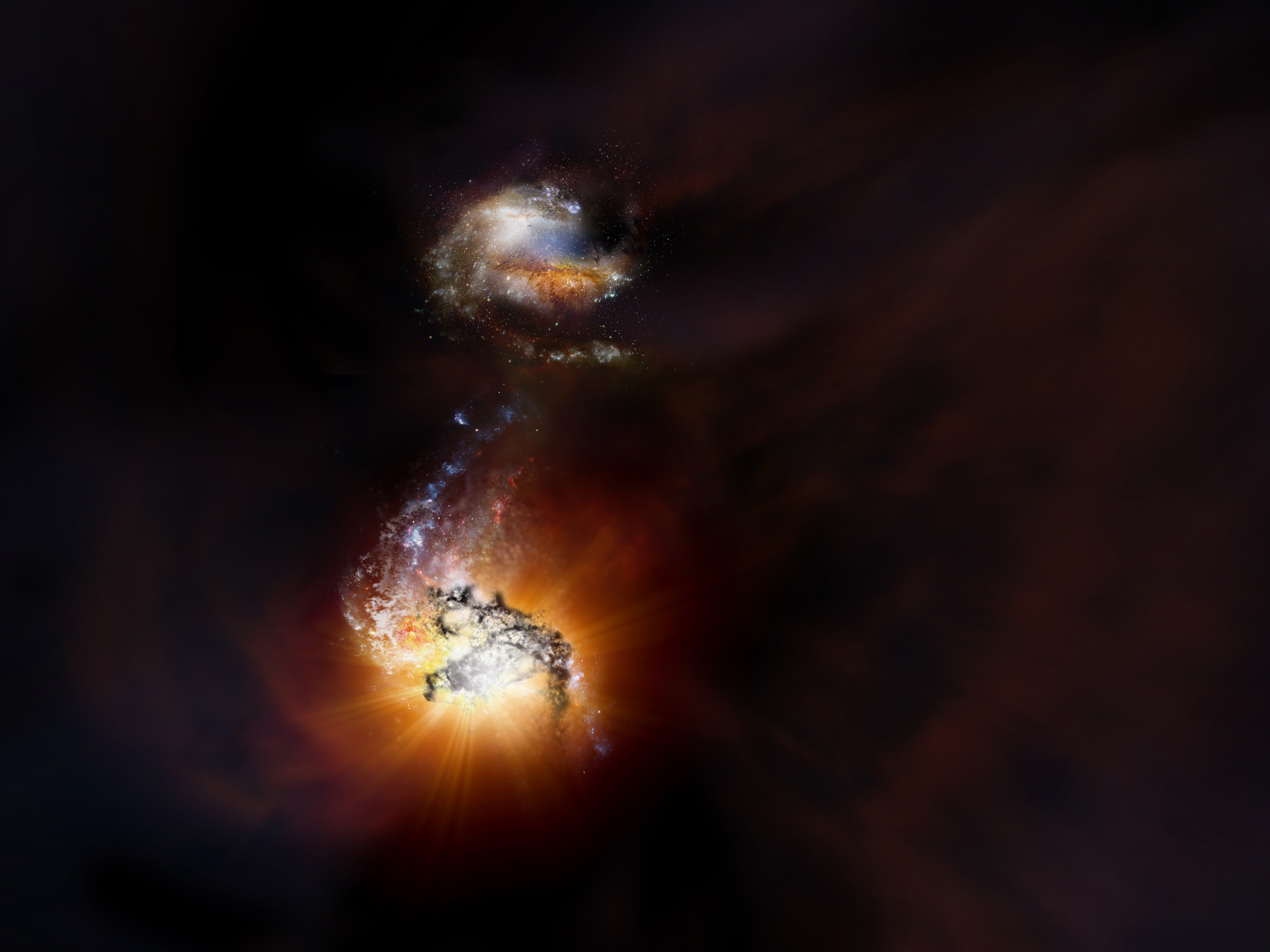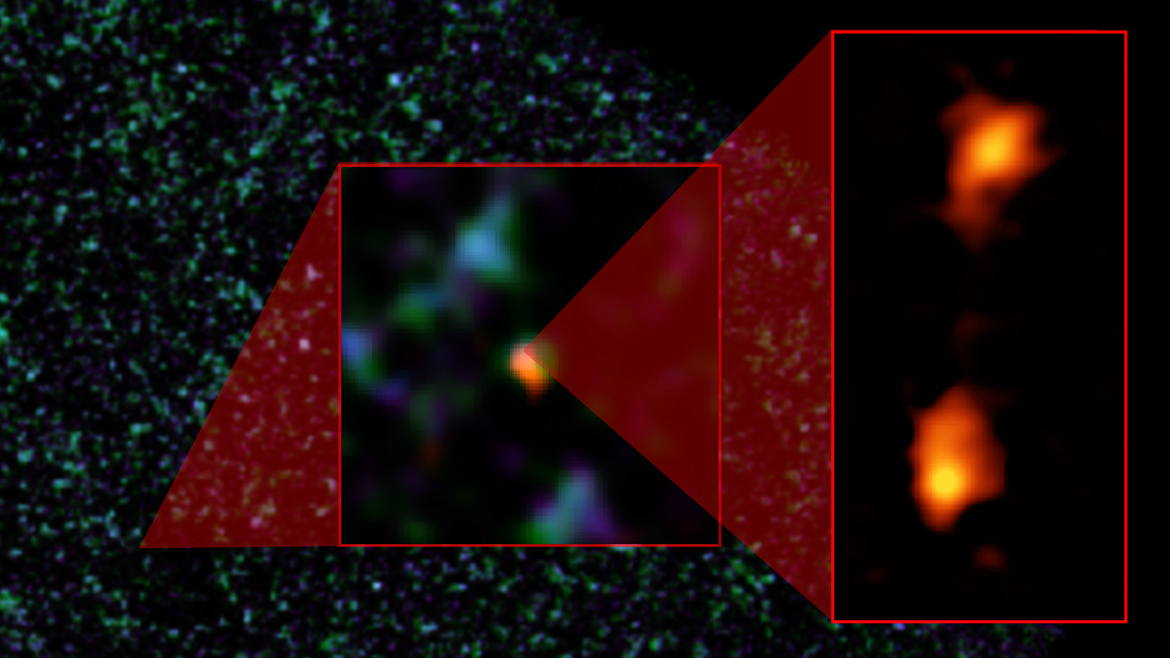Intense Illumination Seen in Early Universe Galaxy Collision

Imagine what the iconic pillars of the Eagle Nebula would look like if a powerful force caused the stellar nursery to create stars at a thousand times its current rate.
New observations confirm that a bright point of light in the constellation Dorado is in fact an intense, extraordinarily bright region of star birth. It was formed by the repetitive collision of two spiral galaxies so far away that their light comes from the early universe.
Dominik Riechers, an astronomer at Cornell University in Ithaca, New York, and lead author on the new study, observed the colliding starburst galaxies with his team using the Atacama Large Millimeter/submillimeter Array (ALMA) in northern Chile. The galaxies are similar in structure to Earth's home, the Milky Way galaxy, which also hosts the star-forming Eagle Nebula..
The new findings suggest that the brightness of the two starburst galaxies isn't merely a result of their collision. The two spiral structures located 12.7 billion light-years away from Earth, known collectively as the ADFS-27 system, also have more star-making material to work with than Earth's home galaxy does. In fact, ADFS-27 has "50 times the amount of star-forming gas as the Milky Way," researchers said in a statement from ALMA.
Starburst galaxies are relatively rare, and the research team said they were astounded to find two of the massive galaxies near each other. These observations are also a dramatic look into the past: Because the starburst galaxies are so far away, astronomers are actually observing them as they appeared when the universe was only 1 billion years old. At that time, the universe was just becoming transparent, as the process of reionization finished.
"Considering their extreme distance from Earth and the frenetic star-forming activity inside each, it's possible we may be witnessing the most intense galaxy merger known to date," Riechers said in the statement. Their predicted course is to ultimately merge into one large elliptical galaxy. And because distance creates a long lag time between when events in those galaxies occur and when we can observe them here, that massive merger may have already occurred.
Follow Doris Elin Salazar on Twitter@salazar_elin. Follow us @Spacedotcom, Facebook and Google+. Original article on Space.com.
Breaking space news, the latest updates on rocket launches, skywatching events and more!

Doris is a science journalist and Space.com contributor. She received a B.A. in Sociology and Communications at Fordham University in New York City. Her first work was published in collaboration with London Mining Network, where her love of science writing was born. Her passion for astronomy started as a kid when she helped her sister build a model solar system in the Bronx. She got her first shot at astronomy writing as a Space.com editorial intern and continues to write about all things cosmic for the website. Doris has also written about microscopic plant life for Scientific American’s website and about whale calls for their print magazine. She has also written about ancient humans for Inverse, with stories ranging from how to recreate Pompeii’s cuisine to how to map the Polynesian expansion through genomics. She currently shares her home with two rabbits. Follow her on twitter at @salazar_elin.

